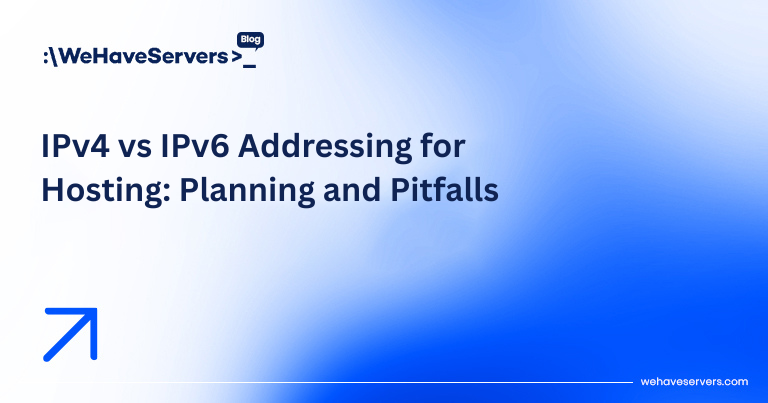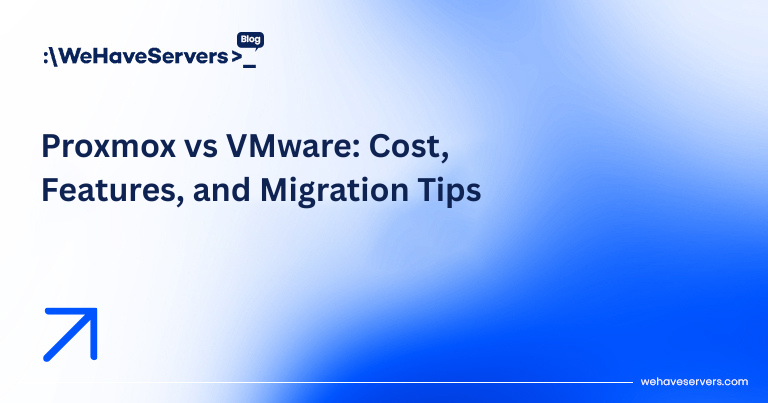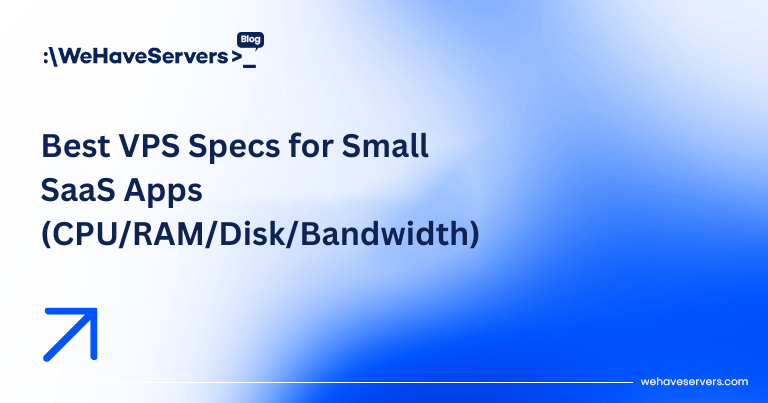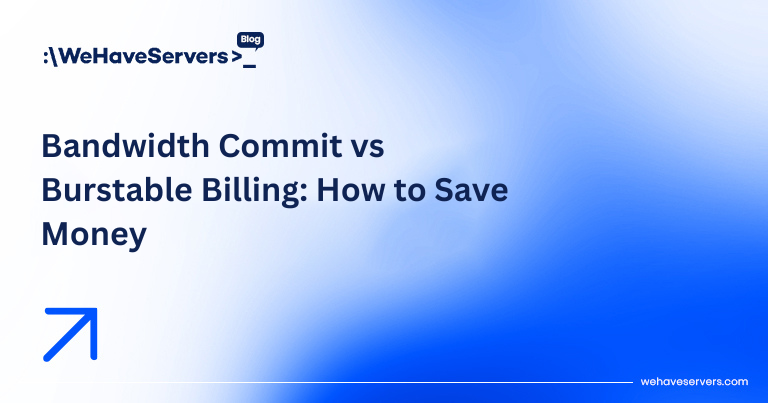
IPv4 vs IPv6 Addressing for Hosting: Planning and Pitfalls
IPv4 vs IPv6 Addressing for Hosting: Planning and Pitfalls
Every server on the internet needs an IP address. For decades, that meant IPv4, the familiar dotted notation like 192.168.1.1. But IPv4 space is officially exhausted, and the world is slowly transitioning to IPv6, which provides a nearly limitless address pool. For hosting providers, VPS operators, and businesses colocating infrastructure, understanding how to plan for IPv6 while managing legacy IPv4 is one of the most important networking challenges of 2025.
This guide explains the differences between IPv4 and IPv6, the current state of adoption, how to deploy dual-stack hosting, and the pitfalls that can derail even advanced sysadmins.
🔹 IPv4 Basics
IPv4 uses 32-bit addresses, providing ~4.3 billion unique addresses. Notation is written in dotted decimal:
IPv4 Example: 203.0.113.42
Subnet Mask: 255.255.255.0 (/24)
Originally this seemed sufficient, but with the rise of mobile, IoT, and cloud services, IPv4 addresses ran out. As of 2025:
- All major Regional Internet Registries (RIRs) have exhausted IPv4 free pools.
- IPv4 resale prices range from $35–$60 per IP (depending on block size).
- NAT (Network Address Translation) is heavily used to stretch IPv4 usage.
🔹 IPv6 Basics
IPv6 uses 128-bit addresses, supporting ~3.4 × 1038 possible addresses — enough for the foreseeable future. IPv6 notation is hexadecimal, separated by colons:
IPv6 Example: 2001:0db8:85a3:0000:0000:8a2e:0370:7334
Compressed: 2001:db8:85a3::8a2e:370:7334
Each subnet is typically a /64, which provides 18 quintillion addresses per LAN segment. Hosting providers often allocate /64 per VPS and /48 or /56 per customer.
🔹 IPv4 vs IPv6: Key Differences
| Feature | IPv4 | IPv6 |
|---|---|---|
| Address Size | 32-bit (~4.3B addresses) | 128-bit (~3.4×10^38 addresses) |
| Notation | Decimal (e.g., 192.0.2.1) | Hexadecimal (e.g., 2001:db8::1) |
| Subnetting | Manual / complex CIDR | Simpler with /64 per segment |
| Configuration | Manual or DHCP | SLAAC + DHCPv6 support |
| Security | Relies on add-ons (IPSec optional) | IPSec baked into protocol design |
| Address Exhaustion | Severe, IP resale market | Practically infinite |
🔹 IPv6 Deployment in Hosting
As of 2025, most Tier 1 ISPs and cloud providers are fully IPv6-enabled. Google reports ~45% of users access services via IPv6. Hosting providers should deploy dual-stack — offering both IPv4 and IPv6 simultaneously.
Steps to Enable IPv6 on a VPS/Dedicated Server
- Ensure your provider assigns you an IPv6 block (usually /64).
- Update network config:
# /etc/network/interfaces (Debian/Ubuntu) iface eth0 inet6 static address 2001:db8:abcd:0012::1 netmask 64 gateway 2001:db8:abcd:0012::fffe - Enable IPv6 in firewall rules (
ip6tablesornftables). - Verify routing:
ping6 google.com traceroute6 ipv6.google.com
🔹 Common Pitfalls in IPv6 Hosting
- Forgetting Firewalls: Many admins secure
iptablesbut forgetip6tables, leaving services exposed. - DNS Misconfiguration: Adding AAAA records without ensuring IPv6 works leads to partial outages.
- Application Incompatibility: Some legacy software may not support IPv6 properly.
- Asymmetric Routing: Misconfigured tunnels or upstreams may cause dropped packets.
- Monitoring Gaps: Tools like Zabbix/Prometheus must be configured to poll via IPv6.
🔹 Transition Mechanisms
Since IPv4 won’t disappear overnight, hosting environments use transition technologies:
- Dual-Stack: Both IPv4 and IPv6 addresses active on interfaces.
- NAT64/DNS64: Allows IPv6-only clients to reach IPv4 services.
- 6to4 / Tunnels: Legacy method, mostly phased out but still in use in some networks.
🔹 Real-World Hosting Strategies
- VPS Providers: Allocate 1 IPv4 + /64 IPv6 by default. Encourage IPv6 adoption but keep IPv4 for compatibility.
- Dedicated Servers: Offer multiple IPv6 subnets for containerized workloads.
- Colocation Clients: Provide /48 allocations so customers can run complex internal subnets.
- CDNs: Fully dual-stack with global IPv6 routing for latency-sensitive applications.
🔹 Business Implications
IPv4 scarcity means providers often charge extra for additional IPv4 addresses. IPv6, by contrast, is abundant and usually free. In Romania/Eastern Europe, a single IPv4 can cost €30–€50, while IPv6 /48 blocks are included at no extra charge.
Hosting companies adopting IPv6 early gain SEO benefits (Googlebot crawls IPv6), lower costs, and future-proofed infrastructure.
✅ Conclusion
The IPv4 vs IPv6 debate is not about replacement but coexistence. In 2025, dual-stack deployment is the gold standard for hosting providers and enterprises. IPv6 adoption continues to grow, but IPv4 remains necessary due to legacy clients and applications. Businesses that plan their IPv6 rollout carefully — avoiding pitfalls like firewall misconfigurations, DNS issues, and monitoring gaps — will save money and stay ahead of the curve.
At WeHaveServers.com, all colocation and dedicated hosting clients receive native dual-stack connectivity in our Romanian/EU data centers, ensuring global reach over both IPv4 and IPv6.
❓ FAQ
Can I run IPv6 without IPv4?
Technically yes, but not all clients and services support IPv6 yet. Dual-stack is safer for production.
Do I need to pay for IPv6 addresses?
No. Unlike IPv4, IPv6 blocks are abundant and usually included for free by hosting providers.
Why do some sites break when I enable IPv6?
Misconfigured AAAA records or incomplete firewall rules often cause partial outages.
How do I check if my server supports IPv6?
Run ping6 google.com or check your assigned addresses with ip addr show.
Will IPv4 ever go away?
Not in the foreseeable future. Expect decades of dual-stack coexistence before IPv6-only becomes mainstream.



